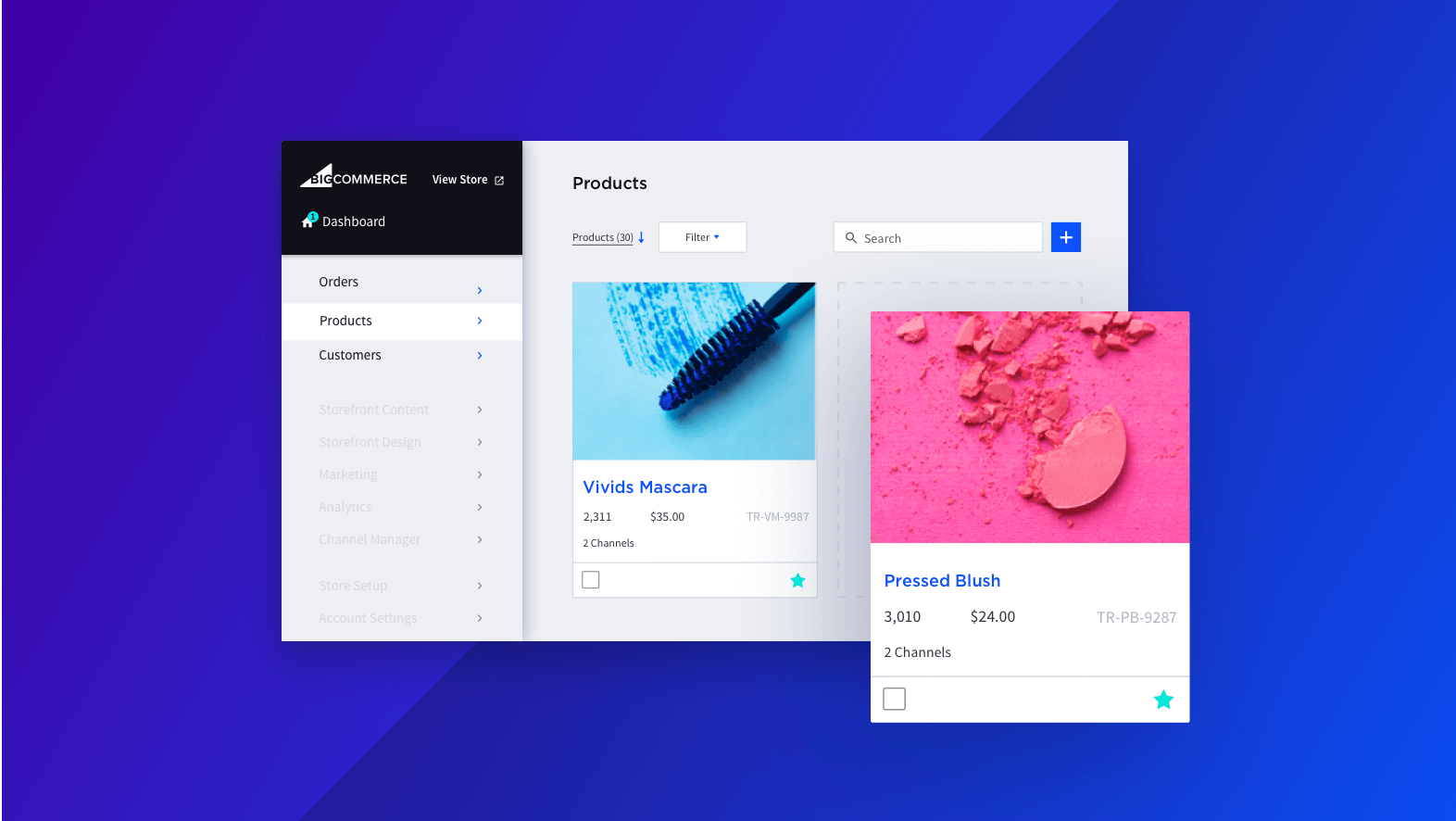
Your catalog of products is one of the most important components of your store. Products that are easy to locate and have clear pricing, attractive images, and provide concise yet informative descriptions drive customer traffic and influence conversion.
In this guide, we’ll cover the various details you can add to your products in BigCommerce, configuring variant and modifier options, managing product pricing, organizing categories and brands, and the different methods for creating new products or migrating an existing catalog.
The information contained in this guide applies to the v3 product creation experience. If you are using the legacy v2 experience, see Adding Products (v2) to learn more about creating products.
V3 Opt-In for Legacy Stores
The v3 product creation experience is now available via opt-in for select stores using the legacy v2 product experience.
Our built-in Add Product page is designed to be a streamlined, single-page experience that allows you to configure variant and customization options as you create products, powered by our robust Catalog v3 API.
Not all stores are eligible to opt in at this time. See our guide to Migrating from the Legacy Product Experience for more information on the differences between the two product experiences and the requirements for opt-in eligibility.
The Add Product Page
The Add Product page appears when editing an existing product from Products › View or adding a new one from Products › Add.
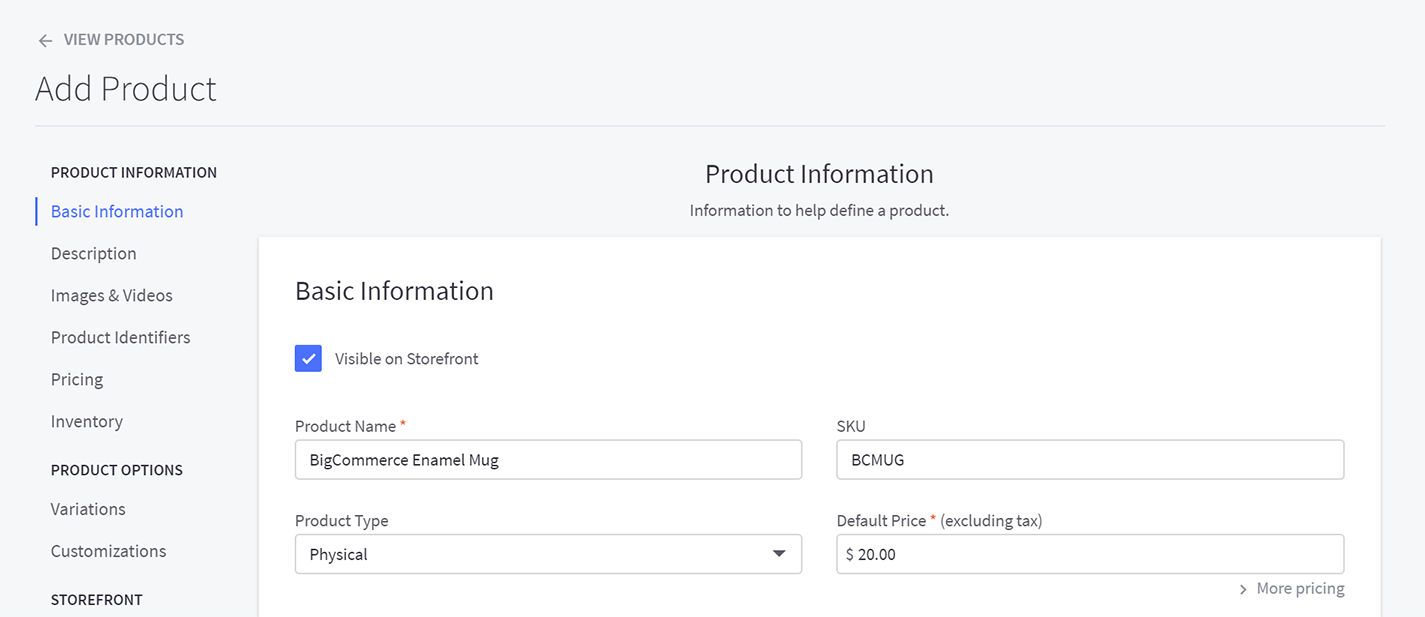
The navigation bar on the left side of the page allows you to quickly access your product’s details, such as pricing, inventory, options, and SEO fields. Product attributes are grouped into the following categories:
If you regulary make edits to certain product areas, like Pricing or Inventory, you can pin them to the top of the page by clicking the pin icon while hovering over the section name.
/pinned%20product%20sections.png)
The following sections cover the available product fields in the Add Product page. To learn about the different methods available for creating or migrating your catalog, see Adding Products to Your Store.
Product Information
The Product Information area of the Add Product page is where you can enter the most important details about your product. Under Basic Information, you can enter the essential details for your product, such as the product’s name, whether it’s physical or digital, and any brand or categories it belongs to. Product Name, Default Price, and Weight are required fields when creating a product.

The Description field is where you can add detailed content about your product. With the WYSIWYG editor, you can format your text, add images and video, and provide links and downloadable files for your customers. Crafting a description with unique text and relevant keywords can also improve your product page SEO.
.png)
Images & Videos is where you can add your product’s visual content. Selecting an eye-catching thumbnail, including multiple high-quality images with keyword-rich descriptions, and attaching a video of your product in action can all aid in attracting customer interest.
When adding images to your products, make sure to optimize properties like file size and format to benefit your product page speeds and store search ranking.
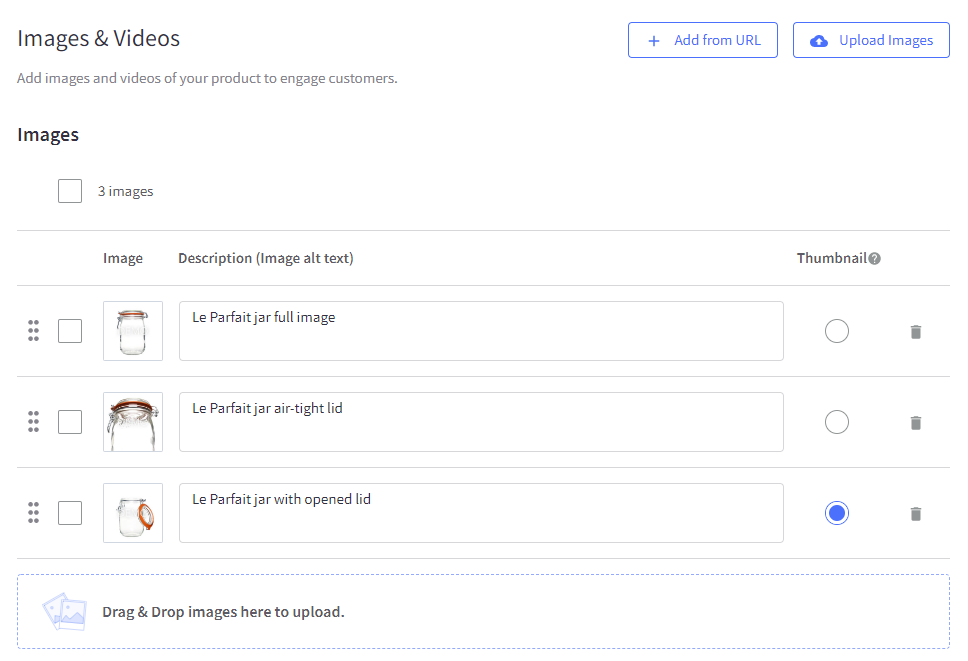
If you are creating a digital product, any downloadable files can be added in the FIles section. You can specify the number of times a product’s files may be downloaded per purchase and set an expiration window. Note that the maximum file upload size is 512 MB.

The fields in Product Identifiers allow you to assign SKUs and other short codes to your product. Universal identifiers like Global Trade Item Number (GTIN) and Manufacturer Part Number (MPN) are often essential for listing products on marketplaces like eBay and Amazon, and it’s common for B2B customers to search for products by their identifiers instead of the product name.

The fields in Pricing allow you to assign a specific tax class to your product and enter non-default pricing such as product cost, MSRP, and sale price. See Product Prices for a detailed walkthrough of the different pricing options available for your products.

In Inventory, you can specify how you want to track product stock in your store. Tracking inventory on the product level is useful for simple products or products with modifier options, while tracking inventory on the variant level allows you to specify stock for each of your product’s variations. If you have products you don’t need to manage stock for, such as digital products, you can disable inventory tracking entirely. For more information on inventory settings and how they affect product availability in your store, see Inventory Tracking.

Product Options
In the Product Options area, you can set up the variations and customizations available with your product. Product variants, such as color and size combinations, behave like individual products with unique pricing, images, and inventory tracking. Modifiers act as add-ons to the base product or its variants, such as custom engraving or personalized images, and can be made required or optional for purchase.
For a comprehensive look into the different options you can create for your products, see Variants and Modifiers.
Storefront
The Storefront area of the Add Product page includes fields that influence how customers locate and interact with your products. In Storefront Details, you can assign a product to the Featured panel of your home page, specify the product’s sort order in category and brand pages, and enter the keywords that will return your product in storefront search results.
If you’ve created a unique design for certain product pages by adding a custom template file to your theme, you can apply it to your product from the Template Layout File dropdown. Additional features in Storefront Details include the ability to display your product’s warranty information, a field to provide a general timeframe for when your product is shipped, and settings to assign and display your product’s condition.
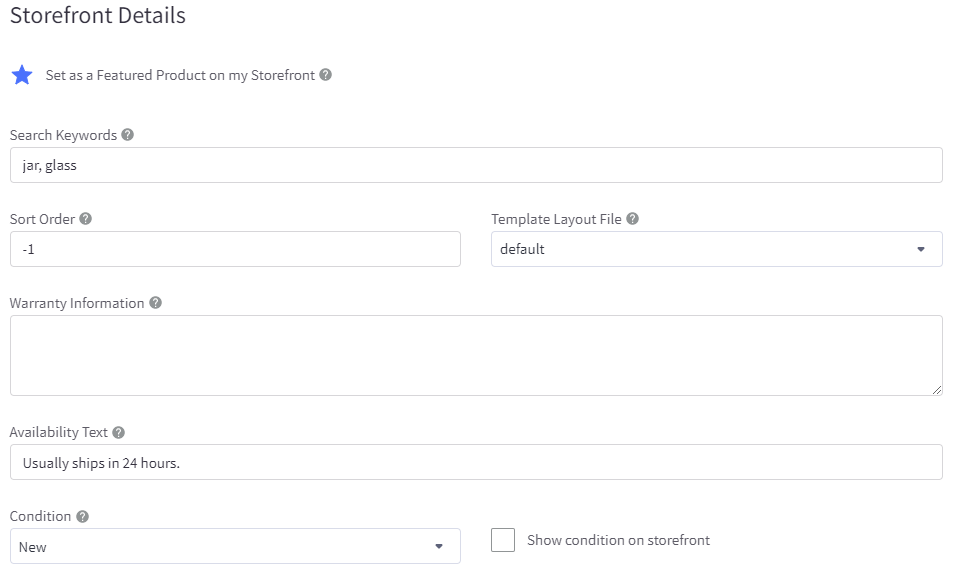
The Custom Fields section offers additional means for displaying product information to your customer. Custom fields are useful for highlighting important information like material, make and model, and product identifiers that don’t have a dedicated field. In stores on a Pro or Enterprise plan, custom fields can also be used as product filters to help your customers locate products quickly and easily.

The Related Products section allows you to specify associated products that appear when a customer views a product page. This is a great way to upsell accessory products, draw attention to product alternatives, and increase the average order value in your store.
You can manually curate the list of related products for each product in your store, or you can utilize our built-in algorithm to assign them automatically. See Product Panels to learn more.
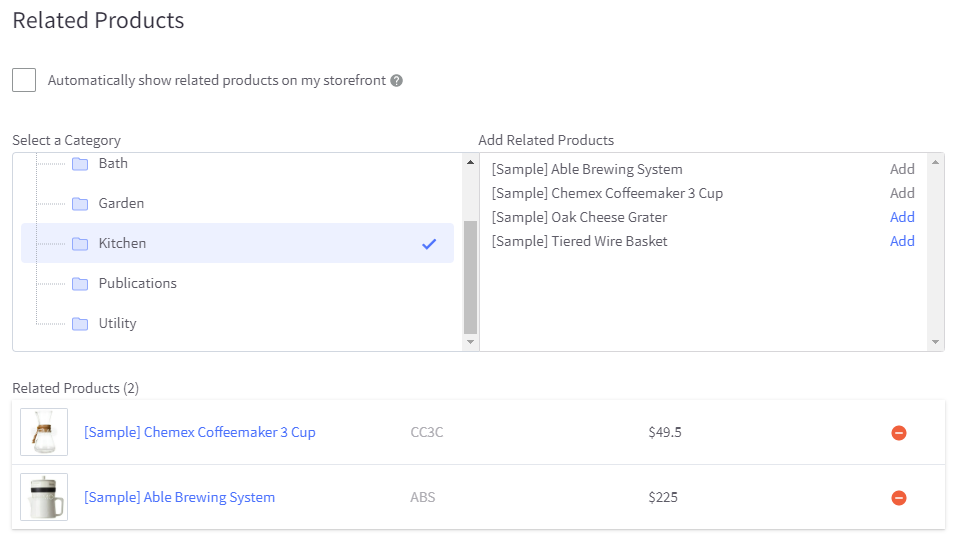
Fulfillment
The Fulfillment area contains the settings that manage how your product is purchased and shipped. Dimensions & Weight is where you specify your product’s measurements, such as width, height, and depth. Coupled with your store’s physical dimension settings, these are vital for calculating accurate shipping costs at checkout and during order fulfillment.

The Shipping Details section allows you to set a product-specific fixed shipping cost or make it eligible for free shipping. These shipping rules will override any quotes enabled in your shipping zones for the individual product.
If you are using ShipperHQ to return shipping quotes at checkout, the advanced shipping fields allow you to associate your product with specific shipping groups and rules you have configured in ShipperHQ.
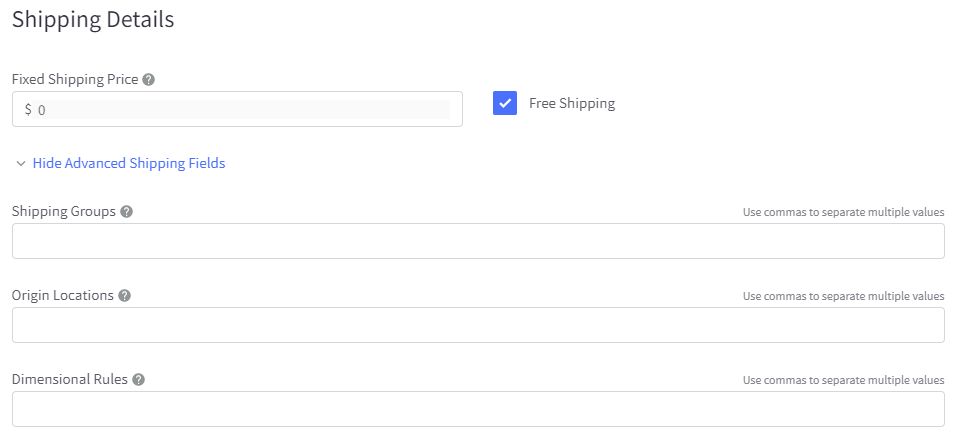
Under Purchasability, you can define the availability of your product and set minimum and maximum purchase quantities. By default, your products are purchasable in your online store, but you can enable pre-order purchasing for upcoming products or products that will be back in stock soon. If you have products that are only available in your physical store or that require customers to call for pricing, you can disable purchasability while keeping these products still visible online.

If you offer different gift wrapping options in your store, you can manage their compatibility with your product from the Gift Wrapping section. This is helpful if you have gift wrapping options geared toward specific products, or products that you don’t want to offer gift wrapping on.
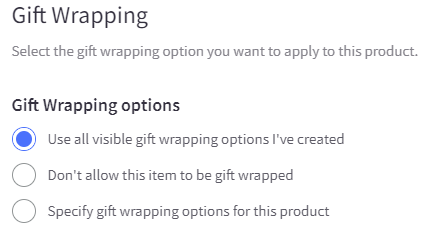
The fields in Customs Information are important if you ship your products internationally. Cross-border fulfillment apps in the App Marketplace use the Country of Origin and HS Codes on your products to accurately calculate customs duties and fees.
.png)
SEO & Sharing
The SEO & Sharing area is where you manage the settings that influence how customers discover your products. Under Search Engine Optimization, you can enter unique metadata for your product, such as page title and meta description. You can also manually specify product page URL or generate one based on your store’s URL Structure settings.

The Open Graph Sharing section has settings that manage how your product appears when it is linked on sites like Facebook. You can use the product’s name and meta description, or enter a new one that only appears when it is linked or shared. To learn more about using the Open Graph Sharing fields, see Facebook Open Graph Settings.
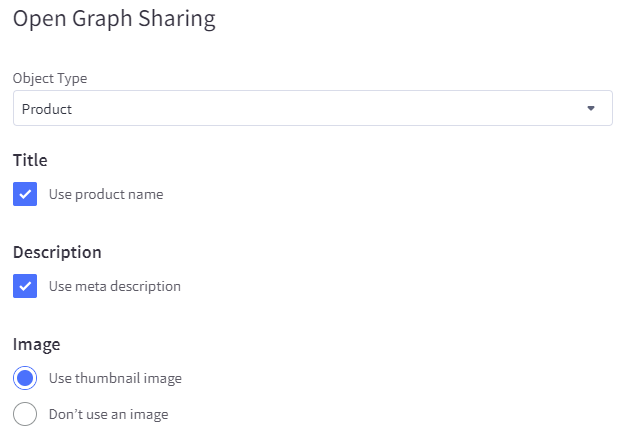
In the next chapter, we’ll compare variants and modifiers, and discuss the use cases of each variant and modifier option for your products.


